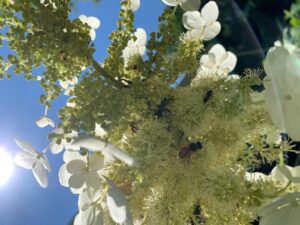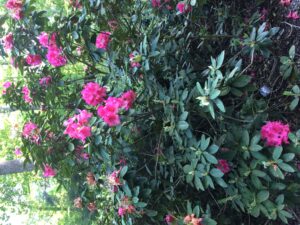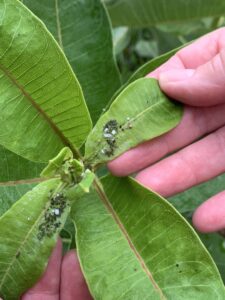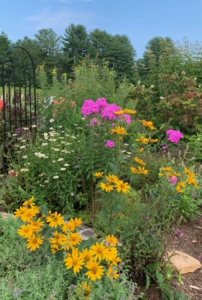Pest Alert – Learn to Distinguish the Good Guys From the Bad
go.ncsu.edu/readext?815726
en Español / em Português
El inglés es el idioma de control de esta página. En la medida en que haya algún conflicto entre la traducción al inglés y la traducción, el inglés prevalece.
Al hacer clic en el enlace de traducción se activa un servicio de traducción gratuito para convertir la página al español. Al igual que con cualquier traducción por Internet, la conversión no es sensible al contexto y puede que no traduzca el texto en su significado original. NC State Extension no garantiza la exactitud del texto traducido. Por favor, tenga en cuenta que algunas aplicaciones y/o servicios pueden no funcionar como se espera cuando se traducen.
Português
Inglês é o idioma de controle desta página. Na medida que haja algum conflito entre o texto original em Inglês e a tradução, o Inglês prevalece.
Ao clicar no link de tradução, um serviço gratuito de tradução será ativado para converter a página para o Português. Como em qualquer tradução pela internet, a conversão não é sensivel ao contexto e pode não ocorrer a tradução para o significado orginal. O serviço de Extensão da Carolina do Norte (NC State Extension) não garante a exatidão do texto traduzido. Por favor, observe que algumas funções ou serviços podem não funcionar como esperado após a tradução.
English
English is the controlling language of this page. To the extent there is any conflict between the English text and the translation, English controls.
Clicking on the translation link activates a free translation service to convert the page to Spanish. As with any Internet translation, the conversion is not context-sensitive and may not translate the text to its original meaning. NC State Extension does not guarantee the accuracy of the translated text. Please note that some applications and/or services may not function as expected when translated.
Collapse ▲Beneficial Insects, Harmful Insects and Scouting
The most numerous form of life on earth is the insect. Insects perform some of the most basic chores of the natural world. Our beneficial six-legged friends perform processes such as organic matter decomposition, soil aeration, and pollination.
Beneficial insects also help to control harmful insects that damage crops in a variety of ways. By employing the pest control philosophy known as IPM or Integrated Pest Management, we can identify and protect beneficial insects while controlling harmful ones.
Healthy plants = happy plants
The first step to pest control is growing healthy plants. Providing plants with good soil, proper moisture, and adequate sunlight keeps plants growing vigorously. When plants are actively growing they produce natural insecticidal chemicals and resist pest pressure. Preventing stress during transplanting is important also. When choosing plant material obtain and use insect ‘resistant’ plant material. Native plants are better suited to the southeast and will often perform better and be more pest resistant than exotics.
Scouting
Scouting is the basis of good Integrated Pest Management. Scouting, the inspection of plants for pests, should be performed weekly during the growing season. A good scout must be able to recognize the good guys from bad guys. Check the undersurface of leaves for aphids, scale insects, lacebugs, whiteflies, and spider mites. Look for signs of damage such as yellowing, chlorotic spots, curled, distorted leaves, wilting, and black sooty mold on the upper surface of leaves. Remember, good guys are often solitary while bad guys are often in groups of hundreds or thousands.
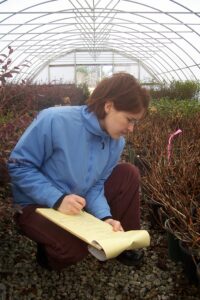 You might also employ the use of scouting devices. One type of scouting device is the white paper test. Tap flowers over a sheet of white paper to dislodge insects such as thrips.
You might also employ the use of scouting devices. One type of scouting device is the white paper test. Tap flowers over a sheet of white paper to dislodge insects such as thrips.
You can also use sticky traps. These monitoring devices can be easily made from yellow and blue plastic plates. Simply coat them in some tacky substance such as spray glue or oil and hang them near your flowerbeds and shrubs.
Whiteflies, aphids, and thrips will be attracted to the traps and become lodged allowing you to count them and decide if action is needed. Sticky tape makes a good monitoring device as well. Simply wrap it around the stems of shrubs and flowers to monitor scale crawlers, spider mites, and other crawling insects.
Consider your thresholds
The grower decides damage thresholds. Economic and aesthetic thresholds may be different depending on plant types, the pest involved, and the use of the plants. Economic thresholds are based on the amount of monetary loss a grower can stand before control becomes necessary. Aesthetic thresholds are based on how much damage an ornamental can sustain before control measures must be implemented.
Use less toxic controls
A water hose is one of the least toxic devices you can use to get rid of pests. Aphids, lace bugs, and spider mites can all be removed with a heavy stream of water. These pests become disoriented and find it difficult to find their way back to the plants. If done several times, this can be an effective control method.
A second effective, less toxic control option is to pick insects off by hand or prune them out. This method is effective for larger pests such as bagworms, tent caterpillars, and fall webworms. Destroy the pests or bag them and place them in the trash.
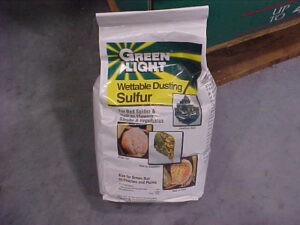 The use of safer pesticides such as ‘biorational insecticides’ is another less toxic control. For instance, Soaps repel insects and irritate them, and are effective on small soft-bodied insects. Minerals such as sulphur are toxic to insects and prevent disease. Oils (Dormant, Summer, Superior, and Neem) coat and smother insects. Naturally derived botanical insecticides created from plants (ex. azadiractin) can be powerful nerve toxins to insects. Insecticides derived from naturally occurring bacteria such as Bacillus thurengiensis products (Bt, Dipel) or spinosyn (Spinosad) all provide good control without polluting the environment.
The use of safer pesticides such as ‘biorational insecticides’ is another less toxic control. For instance, Soaps repel insects and irritate them, and are effective on small soft-bodied insects. Minerals such as sulphur are toxic to insects and prevent disease. Oils (Dormant, Summer, Superior, and Neem) coat and smother insects. Naturally derived botanical insecticides created from plants (ex. azadiractin) can be powerful nerve toxins to insects. Insecticides derived from naturally occurring bacteria such as Bacillus thurengiensis products (Bt, Dipel) or spinosyn (Spinosad) all provide good control without polluting the environment.
So, how do you tell the good guys from the bad? Click on the links below to see images of each pests.
The Bad Guys
Sucking insects
Chewing insects
–Caterpillars
–Beetles
The Good Guys
Parasites
Predators
Predatory true bugs
Encourage Beneficial Insects
Beneficial insects can be encouraged in a number of ways. Start by planting alternative food sources that provide pollen and nectar. Plants such as daisies, Queen Ann’s lace, yarrow, alyssum, golden rod, alfalfa, clovers, and vetches will attract beneficial insects.
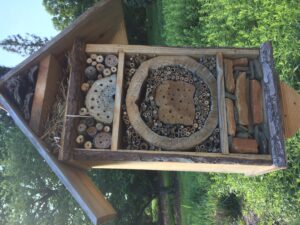
Building a bee house can be elaborate such as this one or as simple as a bundle of paper straws housed in a coffee can.
Water sources attract beneficial insects as well. Birdbaths, temporary puddles, small dishes of water, and dripping water can be easily installed in any garden. Remember to replace your water every few days to avoid mosquitoes and to keep it attractive. Place small ‘perches’ in water sources so that insects can access the water.
The final way to encourage beneficial insects is to provide them shelter. Areas that are left undisturbed benefit insects. Allow forest edges to grow wild and do not mow open areas unnecessarily. Plant perennial flowerbeds that will flower all season by staggering different species throughout the bed. Hedgerows also provide beneficial insects with shelter.





